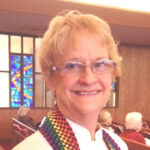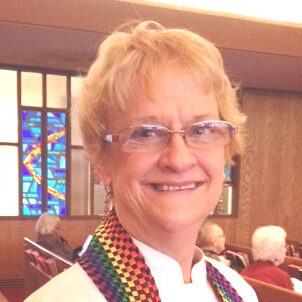Ideas for Stewardship among Young Adults
1. Know who young adults are. Pay attention to them. Ask. Listen. Be willing to change, do differently
2. What motivates young adults?
3. Do we acknowledge “first gift”/commitment?
4. What is the mission of the church? How are resources devoted to achieving the mission?
5. Jesus did not ask for $ too often but did tell “stewardship stories”
6. “Pledging” versus “unpledged giving:” Is weekly offering out of sync with reality? Is “proportional giving” as a statement of faith more relevant?
7. Language of stewardship shift to thankfulness, gratitude
8. “Pledge” as promise? (Use word “promise” instead)
9. How does your gift make a difference? Tell the stories of impact each Sunday!
10. Ask questions about how young adults are in ministry, then tell the story using various media
11. Establish Stewardship Award
12. Work with other institutions / agencies / groups to promote stewardship
13. Promote stewardship as a leadership issue with clergy – Hold accountable
14. Focus on placing younger adults in leadership positions
15. Work to help reduce / eliminate theology school debt
16. Set accountability guidelines for churches to be good stewards
17. Open opportunities for younger leaders / pastors and not be threatened by the change this may bring
18. Communicate the stories of our campus ministries and how they help nurture present and future leaders – encourage “connection” through financial support
19. Offer life-skills class with financial emphasis which could include Freed-Up Financial Living / financial Peace University / etc. – Offer scholarship $’s
20. Encourage stewardship education in theology schools / campus ministries
21. Be in dialogue with young adults about what they need / want instead of what we think they need or want
22. District meetings to encourage churches to create and implement stewardship campaigns annually
23. Ongoing emphasis on stewardship: not budget-based
24. Quarterly ministry “celebration” stories sent by pastor along with monthly statements and notice of upcoming ministry opportunities which they can contribute to consistently. (May be especially helpful for those outside church)
25. Building upon the desire for people to be a part of something positive and one that sets expectations
26. Mentoring others along the “path to generosity”
27. Sharing stories of “giving warriors”
28. Focusing on leadership: capable, competent and visionary and matching Foundation / leadership initiatives with local churches and pastors) (Conferences and Foundations each move towards local church/campus from their side)
29. Creation of a culture that is more “connectional” than “competitive”
30. Development of training resources / advisory boards for local ministry sites
31. Youth serve on local church Stewardship Committees – stewardship planning, serving, Finance Committees
32. Seminary must address these issues to:
+ Develop stewardship curriculum,
+ Reduce debt load for young clergy via commuter costs and length of study,
+ Increase scholarship offerings,
+ Incorporate online education.
33. foundation teaching classes on Stewardship to Licensed Local Pastors and Residents In Ministry group
34. Online courses in Stewardship
35. Do more to talk about seminary – What is it; how to connect to local colleges; talk to congregation
36. Build scholarship funds to enable large scholarships to the best and the brightest (e.g., $15K versus $2K) – Point system
37. Appoint young pastors deliberately and missionally
38. Partnering Foundations and campus ministries for fund development and planned giving
39. Partnership with Foundation, Conference, campus ministry, and local church to strengthen campus ministry
40. Strengthening Intern programs in local churches and Foundations
41. Can we partner with young, promising pastors and the Foundations to mentor them / intern in Faithful Fund Development
42. UM Foundations participate in the U.M. Board of Higher Education’s “Dollars for Scholars” program (where $1,000 given becomes $4,000, when given to U.M.-related universities and seminaries)
43. Wisconsin UMF did a DVD of 6 filmed interviews about commitment to giving. Some interviews went on UMF Web site and the Conference has DVDs available for local churches
44. Example of Western North Carolina’s “Faithful Steward Award” (came out of the UMF’s Stewardship Committee)
45. Example: In North Alabama, the Bishop has focused on young adult clergy, and the four largest churches have pastors now who are under 40
46. Example: North Alabama encourages churches to put young adults into local church leadership; and requires Residents In Ministry two retreats to each have a Stewardship and Mission component and “How to Establish Stewardship in the Local church.” When appointed, all RIM pastors have to have a 90-day plan including engaging young adults
47. Address the parsonage system somehow
48. Open the system to young adult leadership. Help them “lead up.”
49. Help Annual Conference budget decision-makers make the connection with campus ministries impact (put on Web sites, emails, etc.)
50. Campus ministries send a story a month to the Annual Conference Communications people: how has it changed people’s lives?
51. Find out about what Annual Conference pays and who pays benefits for campus pastors and work to make it equitable with pastors
52. Include campus ministries in UMF mailings about stewardship events and opportunities. Example: Wisconsin UMF reimburses cost of Leader’s Guide for Freed-Up Financial Living
53. Invite young adult leaders onto UMF Boards. Example: East Ohio UMF
54. Stop negative talk about the future of the UMC. Focus on exciting stuff, not only in US but around the world; environment; etc.
55. Talk about money for young clergy, including campus pastors. You don’t have to be poor to be clergy.
June 23, 2010 – NAUMF Stewardship Gathering, at
United Methodist Church of the Resurrection


